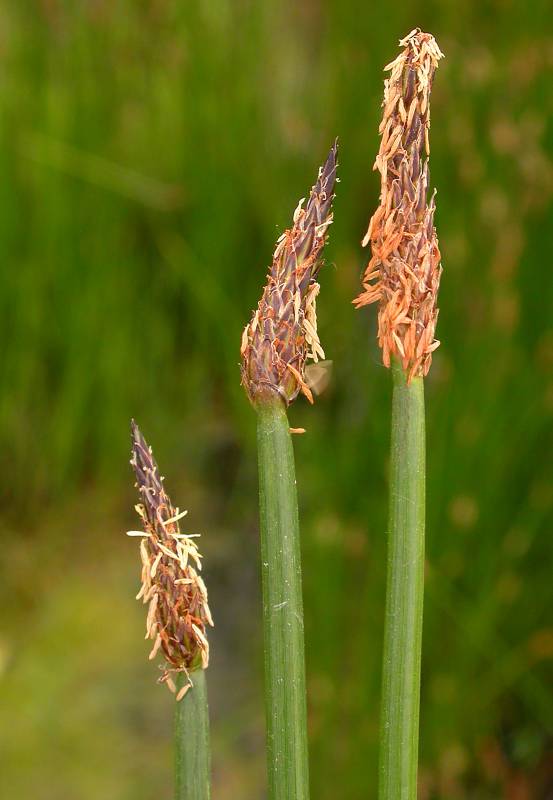Hosted by the University of Washington Herbarium, Burke Museum
Publication: Syst. Veg. 2: 151. 1817.
Origin: Native
Herbarium search: CPNWH
Notes: FNA23: "Eleocharis palustris is the most widespread and common species of the extremely difficult circumboreal "E. palustris complex," which in North America comprises E. palustris, E. mamillata, E. macrostachya, E. erythropoda, E. uniglumis, E. kamtschatica, and E. ambigens. Two or more of these species have been combined by recent authors. The complex has been studied extensively only in northern Europe (S.-O. Strandhede 1965, 1966), where E. palustris, E. mamillata, and E. uniglumis are recognized (S.-O. Strandhede 1966). European studies and preliminary studies in North America by S.-O. Strandhede (1967) and L. J. Harms (1968) indicate that unstable chromosome structure and number as well as interspecific hybridization contribute to the taxonomic complexity of the E. palustris complex.
Eleocharis palustris is extremely variable worldwide. Recognition of infraspecific taxa outside northwestern Europe is premature.....
At least 4 variants are notable in North America:
Variant d comprises most of the plants that cannot be placed in the preceding variants. Most of these plants closely resemble most specimens that I have seen from northern Eurasia and as described for Eleocharis palustris subsp. palustris by S.-O. Strandhede (1966). Variant d has distal leaf sheaths often splitting or disintegrating, the summit margins not reddish, and apices usually broadly obtuse. In North America variant d is mostly subarctic and boreal; it is known from Newfoundland and Labrador to Alaska, south to New York, Wisconsin, Minnesota, Iowa, New Mexico, and California. Some plants of variant d that have markedly narrow tubercles mostly much (to 2 times) higher than wide and narrow achenes only 0.9–1.1 mm wide may deserve taxonomic recognition; they are known from Manitoba west to British Columbia and Alaska, south to Colorado, Utah, and California. Specimens of variant d from scattered western localities from Alaska and Yukon south to California have floral scales 4–5 mm and achenes 1.6–1.9 mm and are very similar to variant c."
Last updated 5/3/2021 by David Giblin.

